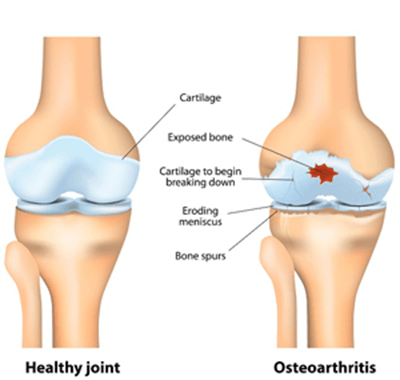DJD Full Form | What is Degenerative Joint Disease
What is the full form of DJD
DJD: Degenerative Joint Disease
DJD stands for Degenerative Joint Disease. It is also called osteoarthritis, a type of arthritis that causes inflammation, breakdown and eventual loss of the cartilage of the joints. It usually affects the joints of hands, knees, spine, and hips and develops as a person?s body wears down with age.

It usually develops slowly in the beginning so it can be hard to diagnose this medical condition until it starts causing painful symptoms. So, if you are experiencing pain in your body or joints while performing your daily tasks, you should consult the doctor to determine if you are suffering from a degenerative joint disease. The doctor may perform certain tests to check if you are suffering from DJD or some other disease.
An accurate diagnosis and proactively treating osteoarthritis help eliminate or alleviate devastating symptoms and development of severe secondary conditions. Without treatment, it usually gets worse over time and begins to affect other joints of the body.
Causes:
The primary cause of DJD is aging as a person gets older the risk of osteoarthritis increases. There are also some factors that can cause this condition, such as:
- Frequently lifting heavy objects as in manual labor
- Congenital joint malformation
- Gender, women are more likely affected by osteoarthritis than men
- Genetic predisposition
- Joint injuries including torn cartilage, dislocated joints
- Ligament injuries
- Obesity
- Smoking and malnutrition.
Symptoms:
- Pain or stiffness in a joint
- Swelling, redness around the joint
- Limited mobility
- Bone spurs
- Difficult walking
- Grating sensation during movement of a joint.
Treatment
The treatment of DJD gives emphasis on symptom management. So, its treatment is based on the severity of the symptoms and their location. Generally, lifestyle changes, over-the-counter medication, and home remedies can provide relief from pain, swelling and stiffness associated with this medical condition.
1) Life style changes:
- Exercise
- Weight loss
- Adequate sleep
- Heat and cold therapy
2) Osteoarthritis medications:
Some medications that may provide relief from pain or swelling in DJD include:
- Oral analgesics like Tylenol (acetaminophen)
- Topical analgesics such as gels, creams, patches etc.
- NSAIDs (nonsteroidal anti-inflammatory drugs) like Advil (ibuprofen) and Aleve (naproxen) etc.
- Corticosteroids, these are taken orally or can be injected directly into the joint.
3) Some natural treatments:
There are also some herbs and supplements that can help you manage symptoms such as:
- Green tea
- Ginger
- Fish oil
- Glucosamine
4) Alternative treatments:
- Acupuncture
- Physical therapy
- Massage therapy
- Hot or cold therapy
Prevention:
- Support your body using athletic supports and shoes, knee brace, ankle brace etc.
- Maintain ideal body weight or keep your body mass index (BMI) in the appropriate range for your height and gender.
- Maintain a healthy and balanced diet based green vegetables and fruits.
- Get enough rest and sleep.